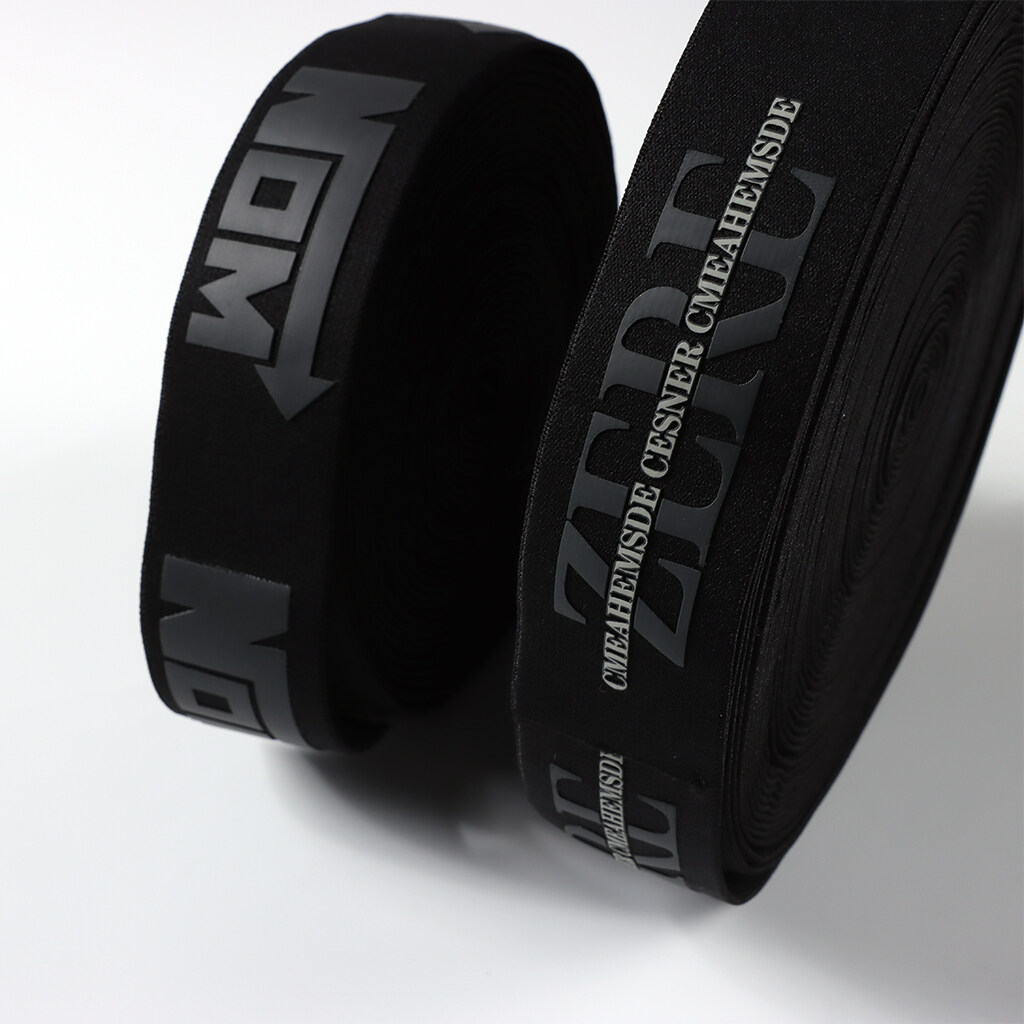Email cannot be empty
Password cannot be empty
Email format error
Email cannot be empty
Email already exists
6-20 characters(letters plus numbers only)
The password is inconsistent
Email format error
Email cannot be empty
Email does not exist
6-20 characters(letters plus numbers only)
The password is inconsistent


When it comes to sourcing materials for products that require flexibility and durability, finding a reliable elastic webbing manufacturer is crucial. Elastic webbing is a versatile component used in a variety of industries, from fashion to automotive. In this blog post, we will explore the key factors to consider when selecting a manufacturer for your elastic webbing needs. We’ll delve into the different types of elastic webbing available, such as wide elastic webbing and elastic webbing straps, and discuss the importance of material quality, such as polyester webbing fabric, to ensure the longevity and performance of your products.
Understanding Elastic Webbing
The Basics of Elastic Webbing
Elastic webbing is a stretchable fabric composed of interwoven strands of rubber or spandex and a variety of fibers such as cotton, nylon, or polyester. This unique composition allows the webbing to retain its shape and provide a secure hold while being flexible enough to stretch. The key properties of elastic webbing include its elasticity, durability, and ability to withstand tension without breaking. These features make it an indispensable material in industries that demand both flexibility and strength.
Common Uses in Various Industries
Elastic webbing has a broad range of applications across multiple industries. In the fashion world, it’s used for waistbands, suspenders, and elastic webbing straps for bags and accessories. The automotive sector incorporates elastic webbing in seat belts and harnesses for safety and comfort. Medical braces and supports also rely on the supportive nature of elastic webbing to provide stability and ease of movement for patients.
Types of Elastic Webbing
Wide Elastic Webbing and Its Applications
Wide elastic webbing, typically measuring more than an inch in width, is often used in applications that require a strong, supportive band. This includes furniture manufacturing for sofa and chair seats, where the webbing must support weight over a long period without sagging or losing elasticity.
The Versatility of Elastic Webbing Straps
Elastic webbing straps are narrower and more flexible, making them perfect for apparel, sporting goods, and luggage. Their versatility allows designers to incorporate them into various products, from cinching systems on backpacks to stretchable straps on athletic equipment.
Materials and Weaving Techniques
Polyester Webbing Fabric: Strengths and Benefits
Polyester webbing fabric is favored for its strength, colorfastness, and resistance to water and UV light. It’s an ideal choice for outdoor gear and any application where the webbing will be exposed to harsh conditions.
The Production Process of Elastic Webbing Tape
The manufacturing of elastic webbing tape involves precision weaving techniques that interlace elastic fibers with textile fibers to create a flat, stretchable band. The process requires specialized machinery to ensure consistent tension and quality throughout the webbing.
Selecting an Elastic Webbing Manufacturer
Quality Assurance
How to Assess the Quality of Elastic Belt Webbing
When evaluating the quality of elastic belt webbing, consider its stretch recovery, which is the webbing’s ability to return to its original length after being stretched. A simple test is to stretch a sample and observe whether it snaps back without any deformation. Additionally, inspect the uniformity of the weave, the consistency of the color, and the smoothness of the edges.
The Importance of Durability and Stretch Recovery
Durability and stretch recovery are critical for the longevity of products that incorporate elastic webbing. High-quality webbing should withstand repeated use and maintain its elasticity over time. This is particularly important for items such as elastic belts, where the webbing is subject to constant stretching and needs to hold up without becoming loose or worn.
Customization Capabilities
The Ability to Customize Webbing for Specific Needs
A manufacturer that can customize webbing to meet specific width, thickness, stretch, and color requirements can be a valuable asset to your business. Customization allows for greater design flexibility and can help differentiate your products in the market.
Case Studies of Successful Custom Webbing Projects
Look for manufacturers that can provide case studies or examples of custom projects they’ve completed. This can give you insight into their capability to handle diverse requests and their experience in delivering tailored solutions to clients.
Sustainability and Ethical Practices
The Role of Eco-Friendly Materials in Manufacturing
An increasing number of manufacturers are turning to eco-friendly materials, such as organic cotton or recycled polyester, to produce elastic webbing. These materials reduce the environmental impact of production and appeal to consumers who prioritize sustainability.
Evaluating a Manufacturer’s Commitment to Sustainability
Assess a manufacturer’s commitment to sustainability by inquiring about their material sources, energy usage, waste management, and labor practices. A transparent manufacturer will be open about their efforts to minimize their environmental footprint and ensure ethical working conditions.
Evaluating a Manufacturer’s Commitment to Sustainability
Assess a manufacturer’s commitment to sustainability by inquiring about their material sources, energy usage, waste management, and labor practices. A transparent manufacturer will be open about their efforts to minimize their environmental footprint and ensure ethical working conditions.
Evaluating a Manufacturer’s Commitment to Sustainability
When selecting an elastic webbing manufacturer, it’s increasingly important to consider their commitment to sustainability. This involves looking beyond the product itself and examining the manufacturer’s practices in terms of environmental impact, resource use, and social responsibility.
Sustainable Materials and Production Processes
A sustainable manufacturer will often use eco-friendly materials, such as organic cotton or recycled polyester, in their elastic webbing. They may also employ production processes that conserve water and energy, reduce harmful emissions, and minimize waste. Ask potential manufacturers about their use of renewable energy sources and whether they have any certifications from recognized environmental organizations.
Ethical Labor Practices
Sustainability also encompasses fair labor practices. Ensure that the manufacturer adheres to ethical working conditions, provides fair wages, and maintains a safe working environment for their employees. Certifications like SA8000 or Fair Trade can be indicators of a manufacturer’s dedication to ethical labor standards.
Working with Your Manufacturer
Communication and Collaboration
Building a Strong Relationship with Your Manufacturer
A successful partnership with your elastic webbing manufacturer is built on open communication and mutual understanding. Establishing clear expectations from the outset and maintaining regular contact can help ensure that your projects run smoothly. Consider scheduling periodic meetings or calls to discuss ongoing projects, address any concerns, and plan for future collaboration.
Tips for Effective Communication and Project Management
Effective communication involves clarity, responsiveness, and active listening. When conveying your requirements, be as specific as possible to avoid misunderstandings. Utilize project management tools or platforms that allow for easy tracking of progress and facilitate collaboration. Always be open to feedback and willing to work together to resolve any issues that may arise.
Lead Times and Logistics
Understanding Production Timelines
Familiarize yourself with the manufacturer’s production timelines, including how long it takes to produce the webbing and any factors that might affect delivery schedules. Knowing these details can help you plan your own production and ensure that you have the necessary materials when you need them.
Navigating Shipping and Handling Logistics
Discuss shipping options and logistics with your manufacturer to find the most cost-effective and reliable method of getting your webbing delivered. Consider factors such as shipping times, customs clearance, and the potential for delays, and plan accordingly.
After-Sales Support
The Importance of Customer Service Post-Purchase
After-sales support is a critical aspect of the customer-manufacturer relationship. A manufacturer that offers excellent customer service can provide peace of mind and help quickly resolve any post-purchase issues that may arise.
Warranty and Return Policies
Inquire about the manufacturer’s warranty and return policies for their elastic webbing. A comprehensive warranty can protect you against defects in materials or workmanship, while a fair return policy allows you to address any unsatisfactory products.
Case Studies and Success Stories
Industry Leaders in Elastic Webbing
Highlighting industry leaders in elastic webbing can provide valuable insights into what makes a manufacturer stand out. Profiles of top manufacturers may include their history, product offerings, and any unique aspects of their business model or production techniques.
Innovations and Advancements in Webbing Technology
Stay informed about the latest innovations and advancements in webbing technology. Manufacturers who invest in research and development may offer cutting-edge products that can give you a competitive edge in the market.
Real-World Applications
How Businesses Have Utilized Elastic Webbing in Products
Explore case studies of how businesses have successfully integrated elastic webbing into their products. These real-world examples can demonstrate the versatility and functionality of elastic webbing across different industries.
The Impact of Quality Webbing on Product Performance
The quality of the webbing can significantly affect the performance and longevity of the final product. High-quality elastic webbing can enhance the user experience by providing better comfort, fit, and durability.
Conclusion
In conclusion, choosing the right elastic webbing manufacturer is a multifaceted decision that goes beyond the product itself. It involves evaluating the manufacturer’s commitment to sustainability, building a strong working relationship, understanding logistics, and ensuring robust after-sales support. By considering these factors, along with the manufacturer’s track record of innovation and success stories, you can make an informed decision that aligns with your business needs and values.